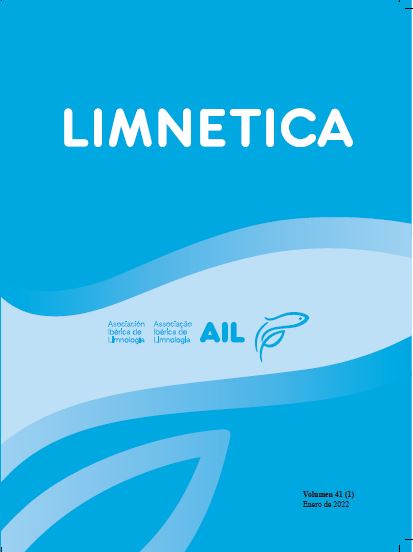The relationship between sediment metal concentration and Odonata (Insecta) larvae assemblage structure in Cerrado streams
Resumen
Metals can be incorporated into stream sediment affecting benthic invertebrate assemblages in different ways. Odonata larvae
have variable tolerances to metals; sublethal levels accumulated in larval tissue can indirectly influence assemblage structure in
environments with differences in types and concentrations of metals in the sediment. This research evaluated the relationship
between Odonata larvae assemblages and sediment metal content in Cerrado streams. We evaluated genus composition, abundance,
richness, Shannon-Wiener (H’) diversity index and Pielou’s evenness index (J’) of the assemblages from 12 streams.
Cluster analysis was used to identify groups of streams according to sediment concentrations of Cu (copper), Zn (zinc), Ni
(nickel), Fe (iron) and Mn (manganese). Canonical Redundancy Analysis (RDA) and Canonical Correspondence Analysis
(CCA) were performed to determine how metals influence Odonata assemblage metrics. Cluster analysis revealed three distinct
groups of streams according to metal concentration in the sediment. RDA showed a negative relation between Pielou evenness
(J’) and the concentration of Ni, Cu, Zn and Mn, while abundance, genus richness and Shannon-Wiener diversity were positively
related with Fe. CCA indicated that some taxa showed an opposite relation with metal concentration, but others were more
abundant in streams subjected to high metal concentrations. Although the increase in iron concentration in streams can lead to
an increase in the abundance of Odonata larvae, high concentrations of coper, zinc and manganese can lead to a reduction in
taxon evenness.
Descargas
Publicado
Número
Sección
Licencia
Los autores que publican en esta revista están de acuerdo con los siguientes términos:
- Limnetica está bajo una licencia de Creative Commons Atribución-NoComercial 4.0 Internacional.
b. Los autores pueden establecer por separado acuerdos adicionales para la distribución no exclusiva de la versión de la obra publicada en la revista (por ejemplo, situarlo en un repositorio institucional o publicarlo en un libro), con un reconocimiento de su publicación inicial en esta revista.
c. Se permite y se anima a los autores a difundir sus trabajos electrónicamente (por ejemplo, en repositorios institucionales o en su propio sitio web) antes y durante el proceso de envío, ya que puede dar lugar a intercambios productivos, así como a una citación más temprana y mayor de los trabajos publicados (Véase The Effect of Open Access) (en inglés).


